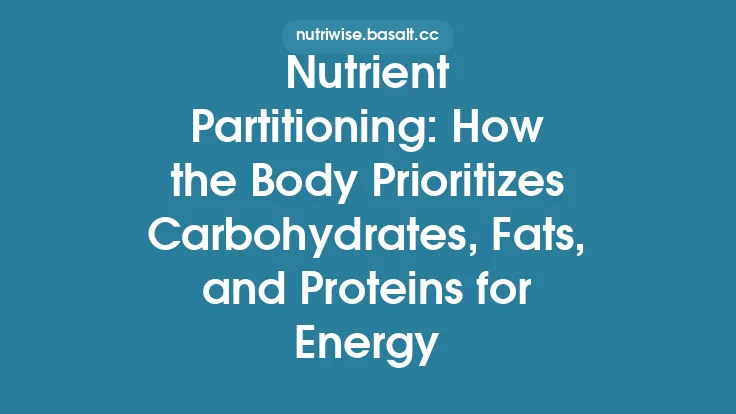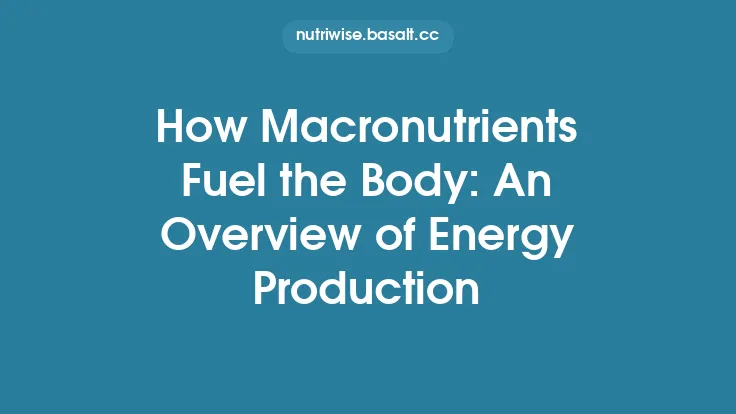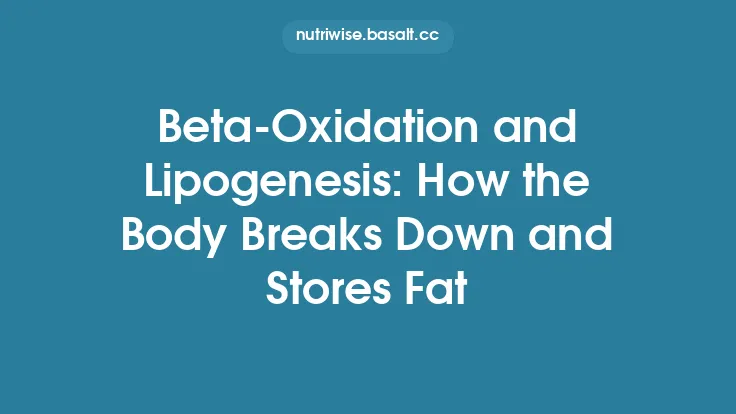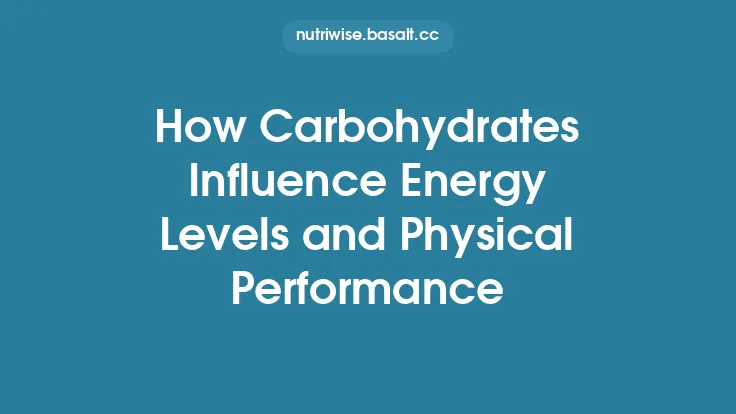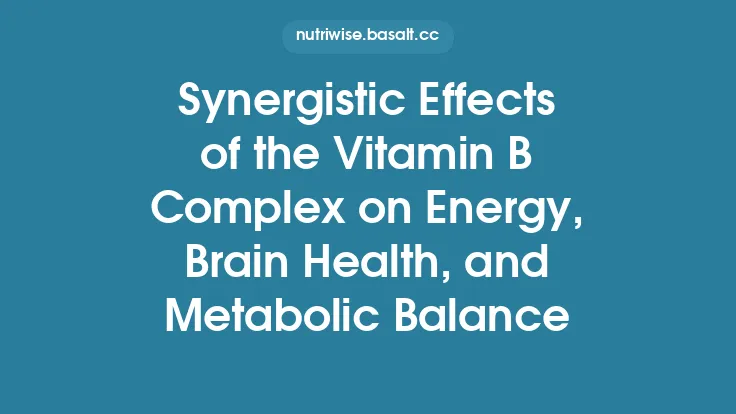The human body is constantly balancing a supply of chemical energy with the demands placed on it. Whether you are lying still on a couch, typing at a desk, or sprinting up a hill, the tissues that need fuel—muscle, brain, heart, and even the immune system—receive it from a hierarchy of macronutrient sources. This hierarchy is not random; it reflects the biochemical properties of each fuel, the speed at which it can be mobilized, and the physiological context (fasted vs fed, rested vs active). Understanding how the body prioritizes these sources helps explain why certain foods feel “better” before a workout, why fatigue sets in after prolonged effort, and how training can reshape the pattern of fuel use without fundamentally changing the underlying metabolic rules.
Resting Energy Utilization
At true rest—defined as the basal metabolic state after an overnight fast and before any purposeful movement—the body’s energy demand is modest, roughly 60–80 % of total daily energy expenditure for most adults. In this condition, the following principles dominate substrate selection:
- Fatty Acids as the Primary Oxidative Fuel
- Availability: Circulating free fatty acids (FFAs) released from adipose tissue provide a virtually limitless supply. Hormone‑sensitive lipase (HSL) in adipocytes hydrolyzes stored triglycerides, releasing FFAs that bind albumin and travel to oxidative tissues.
- Oxidative Efficiency: β‑oxidation of long‑chain fatty acids yields a high ATP per carbon ratio (≈ 2.3 ATP per carbon) and produces acetyl‑CoA that enters the citric‑acid cycle. Because the process is relatively slow, it matches the low, steady ATP turnover required at rest.
- Glucose for the Central Nervous System (CNS)
- Brain Dependence: Although the brain accounts for ~20 % of resting oxygen consumption, it cannot oxidize fatty acids directly due to the blood‑brain barrier. Glucose, supplied by hepatic glycogenolysis and peripheral gluconeogenesis, remains the preferred substrate.
- Limited Utilization: Only a small fraction of total resting glucose turnover is taken up by the brain; the remainder is used by red blood cells and for biosynthetic pathways (e.g., nucleotide synthesis).
- A Minor Role for Amino Acids
- Protein Turnover: At rest, a modest amount of amino acids is de‑aminated to supply carbon skeletons for gluconeogenesis and to replenish TCA‑cycle intermediates (anaplerosis). This contribution is typically < 5 % of total resting energy.
- Ketone Bodies in Prolonged Fasting
- Adaptive Shift: After ~12–16 hours of fasting, hepatic β‑oxidation produces acetyl‑CoA in excess of the TCA‑cycle capacity, leading to ketogenesis. β‑hydroxybutyrate and acetoacetate become an alternative brain fuel, gradually reducing the reliance on glucose.
The net effect is a fuel hierarchy where fatty acids dominate, glucose is reserved for obligate glucose‑using tissues, and protein contributes minimally. This arrangement maximizes the use of abundant, high‑energy stores while preserving limited carbohydrate reserves for critical functions.
Fuel Selection During Low‑Intensity Activity
When activity begins at a low intensity—such as casual walking, light housework, or gentle yoga—the metabolic demands increase modestly (≈ 1.5–2 × basal). The body’s response is a graded shift that still favors fatty acids but incorporates additional carbohydrate:
- Increased Lipolysis and Fat Oxidation
- Sympathetic Stimulation: Low‑level catecholamine release stimulates HSL, raising plasma FFA concentrations. Muscle capillaries become more permeable, allowing greater FFA uptake.
- Mitochondrial Capacity: Trained skeletal muscle possesses a high mitochondrial density, enabling rapid oxidation of the incoming FFAs to meet the modest ATP rise.
- Supplemental Carbohydrate from Muscle Glycogen
- Rapid ATP Supply: Glycogen phosphorylase in muscle can quickly liberate glucose‑1‑phosphate, feeding glycolysis for ATP generation at a faster rate than β‑oxidation.
- Proportion: At ~30 % VO₂max, carbohydrate contribution typically ranges from 20–30 % of total energy, with the remainder supplied by fat.
- Preservation of Blood Glucose
- Limited Hepatic Output: The liver continues modest gluconeogenesis, but the majority of glucose used by the brain remains unchanged. Muscle glycogen thus buffers the need for additional hepatic glucose release.
Overall, low‑intensity work is characterized by dual fuel use, with fatty acids still providing the bulk of ATP while a modest carbohydrate fraction ensures a quick response to any sudden increase in demand.
Metabolic Shifts in Moderate‑Intensity Exercise
As intensity climbs to moderate levels (≈ 50–70 % VO₂max, such as brisk walking, jogging, or cycling), the body must meet a higher ATP turnover rate. The hierarchy adjusts in a predictable manner:
- Carbohydrate Becomes the Dominant Oxidative Substrate
- Glycogen Utilization: Muscle glycogen breakdown accelerates, supplying glucose‑6‑phosphate directly to glycolysis. The rate of glycolytic flux can outpace the slower β‑oxidation pathway, making carbohydrate the primary source for ATP.
- Oxidative vs. Non‑Oxidative Pathways: At this intensity, a larger proportion of glucose is fully oxidized (via pyruvate dehydrogenase into the TCA cycle) rather than being converted to lactate, because oxygen delivery is sufficient.
- Continued Fat Oxidation, but at a Lower Relative Rate
- Absolute Fat Use Increases: Even though the percentage contribution of fat drops (often to 40–50 % of total energy), the absolute amount of fatty acids oxidized can rise because overall energy expenditure is higher.
- RER (Respiratory Exchange Ratio) Shift: The RER moves from ~0.7 (pure fat) toward ~0.85, reflecting the mixed substrate utilization.
- Limited Role of Protein
- Amino Acid Oxidation: Remains low (< 5 % of total) unless glycogen stores are severely depleted (e.g., after prolonged fasting).
The moderate‑intensity zone is therefore a transition point where carbohydrate overtakes fat as the primary oxidative fuel, yet fat oxidation still contributes substantially to total energy output.
High‑Intensity and Sprint Efforts
When activity reaches high intensity—≥ 80 % VO₂max, such as interval training, sprinting, or heavy resistance work—the metabolic system must generate ATP at a rate that exceeds the capacity of oxidative pathways. The body’s prioritization reflects this urgency:
- Predominant Reliance on Anaerobic Glycolysis
- Rapid ATP Generation: Phosphocreatine (PCr) stores provide an immediate ATP buffer for the first ~10 seconds. As PCr depletes, glycolysis accelerates, converting muscle glycogen to pyruvate and then to lactate when mitochondrial oxidation cannot keep pace.
- Energy Yield: Although anaerobic glycolysis yields only 2 ATP per glucose molecule, its speed compensates for the lower efficiency.
- Minimal Fat Oxidation
- Rate Limitation: β‑oxidation cannot supply ATP quickly enough to meet the high demand; its contribution drops to < 10 % of total energy during maximal efforts.
- Oxygen Limitation: High-intensity work often exceeds the rate of oxygen delivery, rendering oxidative pathways relatively inactive.
- Protein Contribution Remains Small
- Catabolic Signals: Only during repeated high‑intensity bouts with insufficient carbohydrate intake does amino‑acid oxidation increase, primarily to replenish TCA‑cycle intermediates.
Thus, speed trumps efficiency: the body prioritizes carbohydrate (both stored glycogen and circulating glucose) and phosphocreatine, while fat oxidation is largely suppressed.
Prolonged Endurance and the Transition to Fat Oxidation
During long‑duration activities (≥ 90 minutes) such as marathon running, cycling, or hiking, the initial reliance on carbohydrate gradually wanes as glycogen stores become depleted. The body then re‑establishes a fat‑centric metabolism:
- Depletion of Muscle Glycogen
- Critical Threshold: When muscle glycogen falls below ~30 % of its initial content, the rate of carbohydrate oxidation declines sharply.
- Up‑regulation of Fat Mobilization
- Enhanced Lipolysis: Catecholamine levels remain elevated, further stimulating adipose HSL and increasing plasma FFA concentrations.
- Increased Intramuscular Triglyceride (IMTG) Use: Trained athletes develop a greater capacity to oxidize IMTG, reducing reliance on circulating FFAs.
- Ketone Utilization (During Very Long Efforts)
- Hepatic Ketogenesis: After several hours of sustained activity, especially in low‑carbohydrate states, the liver produces ketone bodies that can be oxidized by skeletal muscle and the brain, sparing remaining glucose.
- Protein Sparing Mechanisms
- Reduced Amino‑Acid Oxidation: As fat oxidation rises, the need for gluconeogenic amino acids diminishes, helping preserve lean tissue.
The endurance adaptation is a classic example of the body’s ability to shift back toward the high‑energy, abundant fuel (fat) once the limited, fast‑acting carbohydrate pool is exhausted.
Influence of Nutrient Timing and Glycogen Stores
While the article’s focus is on intrinsic prioritization, it is useful to note how recent nutrient intake can temporarily reshape the hierarchy:
- Pre‑Exercise Carbohydrate Loading
- Elevated Muscle Glycogen: Increases the absolute amount of carbohydrate available for oxidation, allowing higher intensities to be sustained before the shift to fat.
- RER Elevation: A higher carbohydrate pool pushes the RER upward, indicating a greater proportion of carbohydrate oxidation even at moderate intensities.
- Fasted vs. Fed States
- Fasted Exercise: Lower hepatic glycogen and plasma glucose push the body to rely more heavily on fatty acids from the outset, even at moderate intensities.
- Fed Exercise (post‑prandial): Elevated insulin suppresses lipolysis, reducing plasma FFA availability and biasing the system toward carbohydrate use.
- Post‑Exercise Recovery
- Glycogen Re‑synthesis: Consuming carbohydrate after activity restores muscle glycogen, resetting the hierarchy for the next bout of activity.
These temporal modifications are superimposed on the baseline prioritization rules described earlier, illustrating how diet can fine‑tune but not overturn the fundamental metabolic hierarchy.
Adaptations with Training and Chronic Activity Patterns
Repeated exposure to specific intensities induces plastic changes in the enzymes, transporters, and mitochondrial content that influence how the hierarchy is expressed:
- Endurance Training
- Mitochondrial Biogenesis: Increases the capacity for β‑oxidation, allowing a higher absolute rate of fat oxidation even at moderate intensities.
- Enhanced Fatty‑Acid Transport: Up‑regulation of CD36 and FATP proteins improves muscle uptake of FFAs.
- High‑Intensity Interval Training (HIIT)
- Improved Glycogenolytic Enzyme Activity: Increases the speed of glycogen breakdown, supporting rapid carbohydrate oxidation during repeated sprints.
- Greater Phosphocreatine Resynthesis: Improves the ability to replenish PCr between high‑intensity bouts, sustaining the reliance on the phosphagen system.
- Strength Training
- Increased Muscle Mass: Raises overall resting metabolic rate, modestly increasing basal fat oxidation due to a larger mitochondrial pool.
These adaptations shift the quantitative balance (e.g., a trained endurance athlete may oxidize 70 % of calories from fat at 60 % VO₂max) but the qualitative hierarchy—fat first at rest, carbohydrate added as intensity rises, protein remaining a minor contributor—remains intact.
Practical Takeaways for Managing Energy Sources
- For Everyday Activity:
- Aim for a balanced diet that maintains adequate glycogen stores while providing sufficient dietary fat to support resting and low‑intensity fuel needs.
- When Planning Moderate‑Intensity Workouts:
- Consuming a modest carbohydrate snack 30–60 minutes beforehand can ensure that muscle glycogen is readily available, improving performance without overwhelming fat oxidation.
- For High‑Intensity Sessions:
- Prioritize carbohydrate availability (e.g., a pre‑session meal rich in easily digestible carbs) to maximize glycolytic capacity and phosphocreatine replenishment.
- During Long Endurance Events:
- Incorporate periodic carbohydrate intake (gels, sports drinks) to delay glycogen depletion, but also consider training the body to oxidize a higher proportion of fat, which can spare carbs for later stages.
- Recovery Nutrition:
- Replenish glycogen with carbohydrate within the first two hours post‑exercise, and include protein to support tissue repair—this restores the baseline hierarchy for the next activity bout.
By recognizing the built‑in prioritization—fat at rest, carbohydrate added as demand rises, protein as a backup—the individual can align nutrition and training strategies with the body’s natural metabolic logic, leading to more efficient energy use, better performance, and improved long‑term health.
